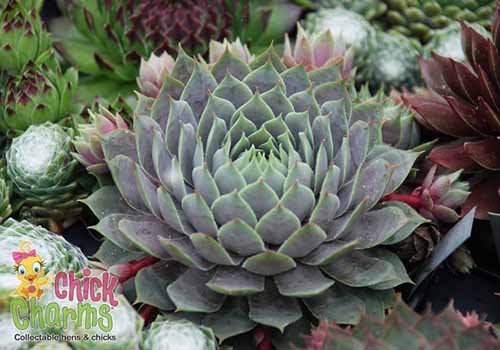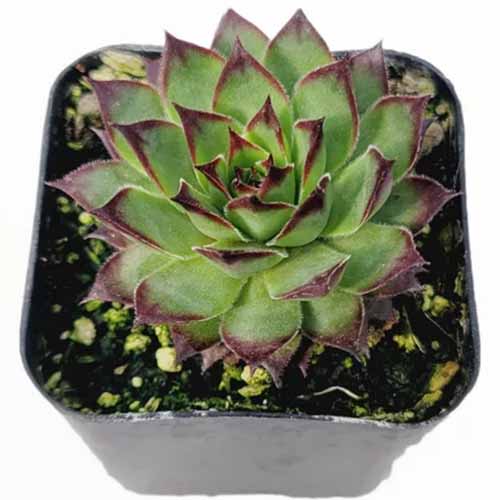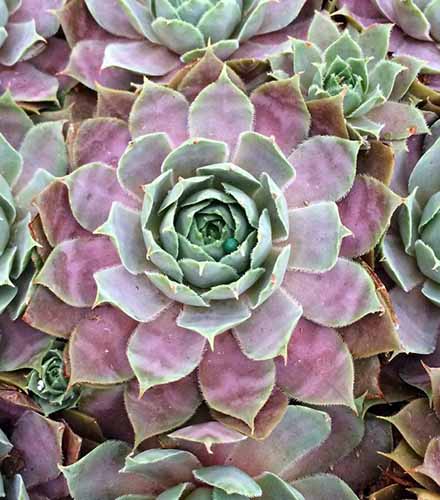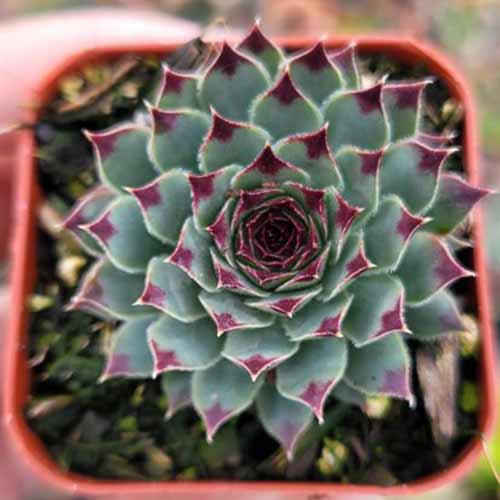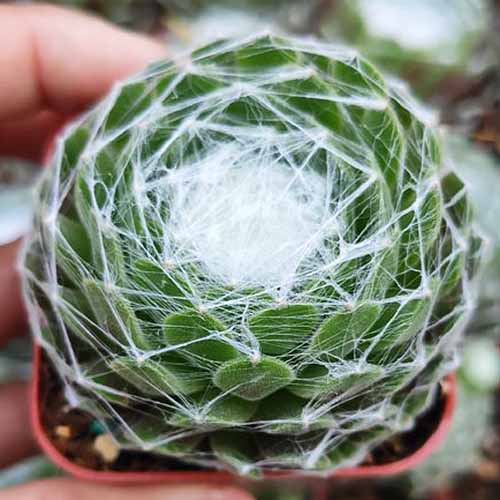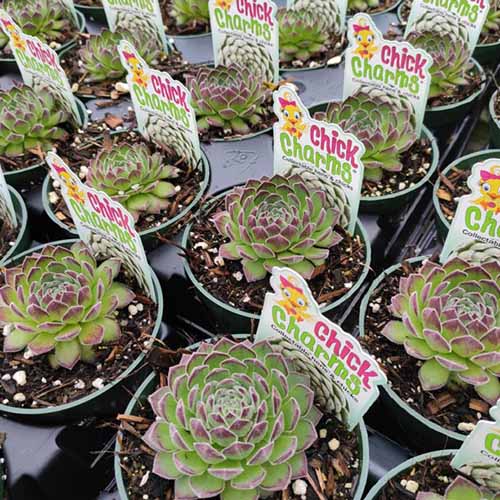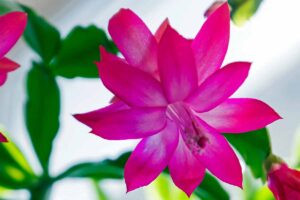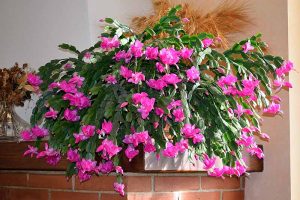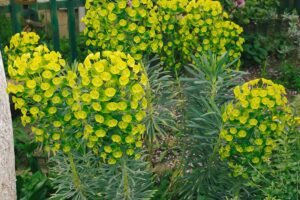I like to think of the many types of Sempervivum as “Stayin’ Alive” plants.
No, it’s nothing to do with disco. Rather, it’s that name that means “always living” when translated from Latin.
These succulents, with many varieties suitable for home gardens that are commonly called hens and chicks or houseleeks, certainly live up to the Latin genus name.
They’re perennials that will last at least two or three years before the “hens” bloom and then die – leaving numerous offset “chicks” behind to keep on growing.
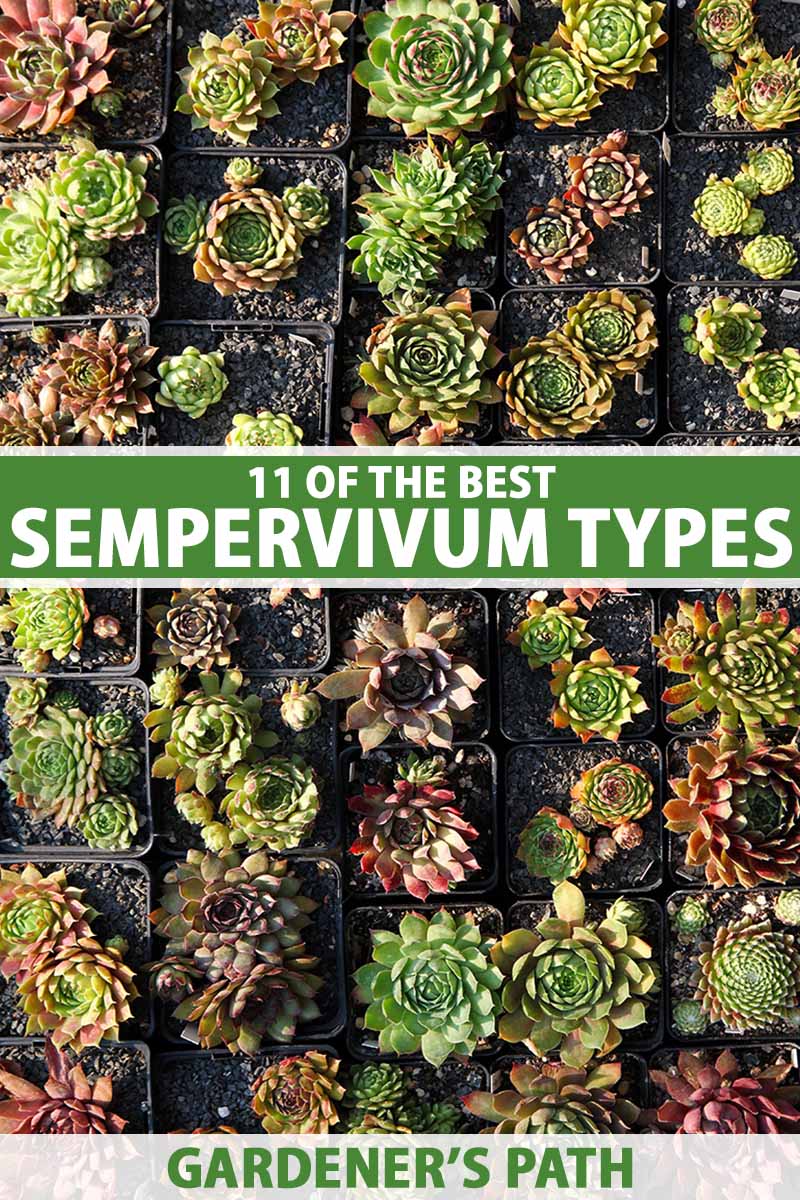
We link to vendors to help you find relevant products. If you buy from one of our links, we may earn a commission.
They’re handy for dry areas with medium to poor soil, making an appealing and fast-spreading ground cover or addition to a container or rock garden.
Best of all, they look great in water-wise gardens, with their dense, fleshy rosettes that have a desert vibe. And they come in a variety of colors and rosette patterns, too.
The most popular species is S. tectorum, also known as the common houseleek.
S. arachnoideum, or the cobweb houseleek, is also highly recognizable due to the faux spiderwebs that grace its foliage.
S. calcareum is another species you’re likely to come across. It’s most prized for its larger-than-average rosettes tipped with a mahogany accent.
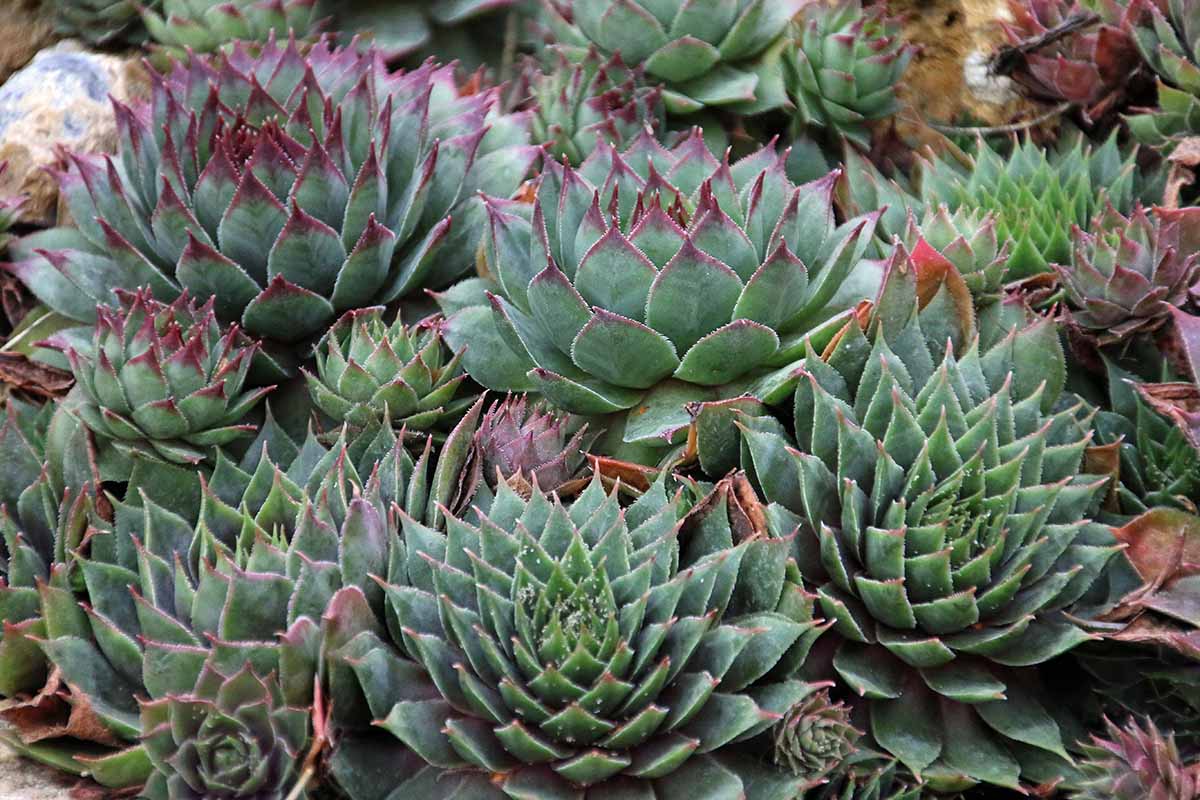
If you’re looking for the best Sempervivum to grow in your landscape or container garden, you may hope to make your decision to fit a certain color palette, or because you’re looking for something architectural and unique.
Rest assured, all of these species as well as their hybrids and cultivars are easy to grow and hardy – you really can’t go wrong as long as you’re able to provide the conditions they crave.
These plants produce just a single flower in their lifetimes, and pollinated flowers produce seed that can be propagated. But the “chick” offsets they produce are a key feature when it comes to easy-breezy propagation.
These “chicks” start life attached to the parent “hen” by a stolon, then gradually form their own roots and attach to the surrounding soil.
You can let them grow where they like, as long as the area doesn’t become overcrowded, or transplant them elsewhere. These are perfect for gifting as well, and often abundant!
If you’re looking for the best variety to suit your taste and meet your growing needs, check out our shortlist of 11 of the best Sempervivum types to grow at home.
Here’s the lineup:
11 of the Best Sempervivum to Grow at Home
Keep in mind, whether you’re an advanced collector or a newbie succulent grower who wants to acquire an unusual-looking hens and chicks plant, the more colorful Sempervivum hybrids and cultivars can be more difficult to find for purchase.
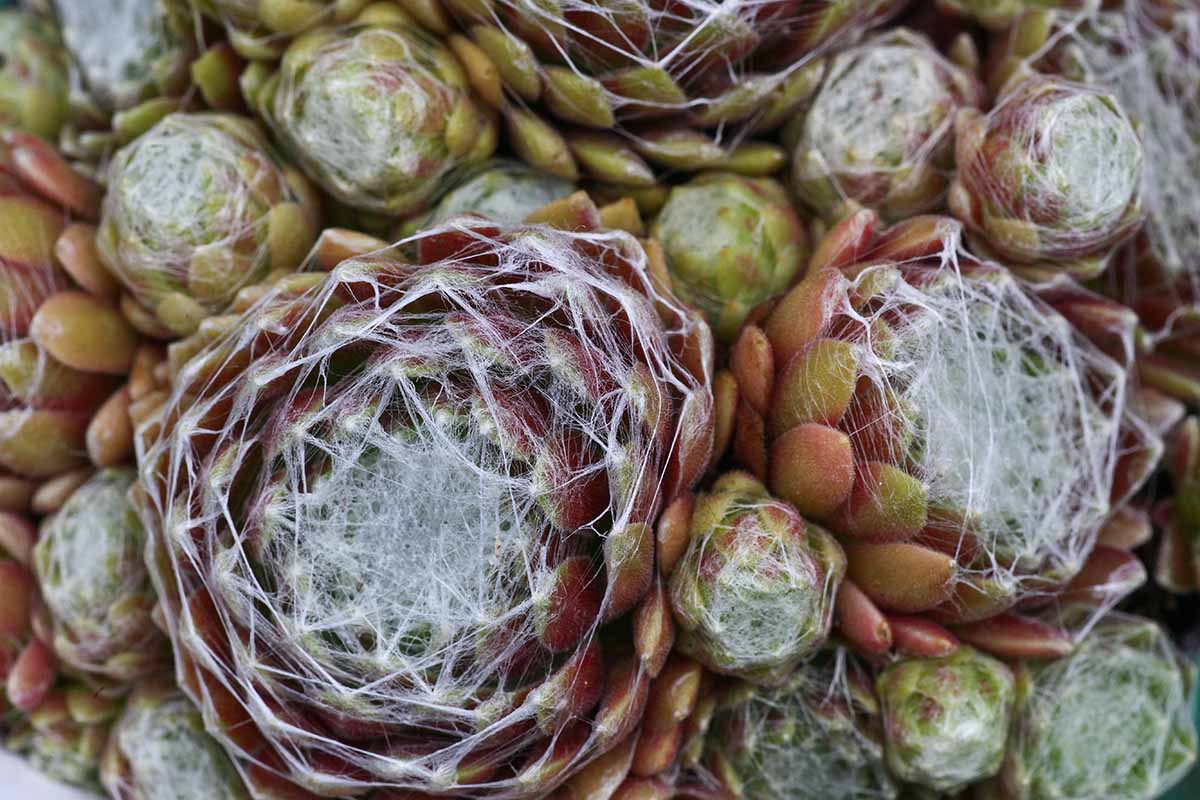
Sometimes you can order a single plant of a specific variety and have it delivered to your doorstep.
I’ve featured some of those options in our curated list of best types below. Specialty succulent purveyors in your area may be more likely to have rare options in stock than your typical nursery.
And then, there’s the grab bag option.

Nature Hills Nursery and Succulent Gardens are both reliable sources for unusual types of these succulents, but they sell the plants in mixtures and do not guarantee a certain variety will be available or shipped to you.
Whatever you wind up with may be a surprise from a long list of varieties!
Now, on to our top picks. These choices are some of the most intriguing and attractive varieties you can grow in a container, rock garden, or in a bare spot in the yard.
Here are 11 potential candidates to become your next favorite Sempervivum:
1. Berry Blues
You might see blue but you won’t feel that way when this deep-hued hens and chicks plant is spreading raucously across the ground in your backyard or within a rock garden.
With blue-green foliage surrounding an almost burgundy center, Berry Blues™ reaches four inches tall and plants can produce offsets and spread as much as a foot before flowering.
This blue beauty is even more cold-tolerant than most, though not quite as heat tolerant as some varieties. It’s hardy in Zones 3 to 8.
Part of the Chick Charms® series from Garden Solutions, Berry Blues™ is available in four-inch pots from Walmart and as part of the “grower’s choice” grab bag of selections available at Nature Hills Nursery in a four-pack of quart-sized containers.
2. Berry Bomb
You’ll want to leave these berries right where they are once you plant them in a rock garden or along a wall – no picking!
Instead, they provide a feast for the eyes, with cupped leaves forming deep clusters of three- to four-inch rosettes that are burgundy-grape-colored in early spring.
At other times of year, the foliage is more green and silver than berry-toned, but it’s always lively and pretty.
They’re hardy in Zones 5 to 10.
Also part of the Chick Charms® series, Berry Bomb™ is sold as part of their Berries and Cream™ Trio, along with Berry Blues™ and Cotton Candy™.
These are available planted together in a three-and-a-half-inch nursery pot from Hirt’s Gardens via Walmart.
3. Black Rose
The color isn’t true enough to match a little black dress, but this Sempervivum is as classic and handy as the beloved all-occasion garb.
It also swirls like one’s a favorite skirt, only upward.
‘Black Rose’ forms true green rosettes that grow about four inches tall and spread six inches, tops. They develop purple-black tips that become ever more prominent as the weather warms.
The color looks especially lovely in a container with other outdoor succulents that have red foliage.
This cultivar is often confused with Aeonium arboreum ‘Black Rose,’ another rosette-forming succulent from a different genus which has thicker stems and a more saturated, blacker color.
Sempervivum ‘Black Rose’ is available in two-, four-, or six-inch pots from Walmart and as a potential “grower’s choice” option from Succulent Gardens.
4. Cornelia
The fine hairs on the edges of its light green foliage make it appear as if ‘Cornelia’ is dressed in lacey finery.
Those rosettes are dainty, too, reaching about three inches tall and three inches across, though plants can spread eight to 10 inches.
But don’t let that lacy look fool you – this plant is tough! ‘Cornelia’ is hardy in Zones 5 to 10.
The rosettes develop a blush of red on the tips in bright sunlight, but the base remains more green as summer ushers in hot weather.
Individual ‘Cornelia’ rosettes in two-inch pots, as larger potted four- and six-inch clusters, are available from Walmart.
5. Desert Bloom
Wish you could bring the sunny sand and succulent plants from arid regions home to grow in cooler climes? This variety has a definite desert vibe, but grows far more quickly than most types of cacti and is hardy in Zones 4 to 9.
‘Desert Bloom’ produces rosettes about three-inches square at maturity, with baby offsets surrounding the mass at the base in clusters. The plant will spread about eight inches.
Its pointy leaves are light green kissed with a dusky pink in spring. The hue becomes bright lilac in winter.
Like a jade plant, it has a protective waxy coating that makes the surface smoother than that of some other varieties.
‘Desert Bloom’ is available from Hirt’s Gardens via Walmart in quart-size pots.
6. Greenii
‘Greenii’ is a cultivar of S. calcareum, a species characterized by large rosettes.
Its sharply pointed leaves can form rosettes that are six inches across and the plants reach about the same height. They can spread up to a foot at maturity.
Each point is tinged with a mahogany hue, and the overall effect is big and bold.
This oversize succulent is hardy in Zones 4 to 9, so it offers a high-impact option for greening up the desolate winter landscape.
In the cold months, it’s a welcome sight grown in a patio container or on rock garden hardscape features.
‘Greenii’ plants are available individually in two-inch pots and in four- or six-inch clusters from Walmart.
7. Hurricane
This is the only type of ‘Hurricane’ you would want to hit your yard!
A cultivar of the unusual and striking cobwebbed S. arachnoideum, ‘Hurricane’ takes its name from its swirling habit.
Between the curved rosette and the red-tinted green foliage with wispy, cottony growth on top, the overall effect – if you squint – is like the action you might see in the eye of a storm.
Hardy in Zones 5 to 10, ‘Hurricane’ produces more compact rosettes than most hens and chicks. They reach just three inches tall and grow about that wide.
‘Hurricane’ is available from Walmart in two- or four-inch pots and four- or six-inch potted clusters.
8. Lilac Time
The open rosettes that are a feature of this cultivar have been compared to water lilies, and ‘Lilac Time’ sports a striking range of beautiful colors.
Look for deep pink, lavender, and silvery green-gray on the one- to two-inch rosettes as the seasons progress.
It may be missing that signature lilac scent, but this variety makes up for it by adding life to the winter landscape. It’s hardy in Zones 2 to 9 and spreads a few inches wide.
As with all succulents, excellent drainage is a must. Provide cover if it’s pouring out, or consider planting this variety in a pot that can be moved to shelter if heavy rain is in the forecast.
And never water it from overhead. The open habit of the rosettes means the leaves hold on to water if it’s wet out, which can promote disease.
‘Lilac Time’ is available as one of the possible “grower’s choice” options in a mix of four hens and chicks from Nature Hills Nursery.
9. Red Lion
Bred in Belgium, ‘Red Lion’ has tight, kitten-size rosettes that reach just three inches tall and spread four to five inches.
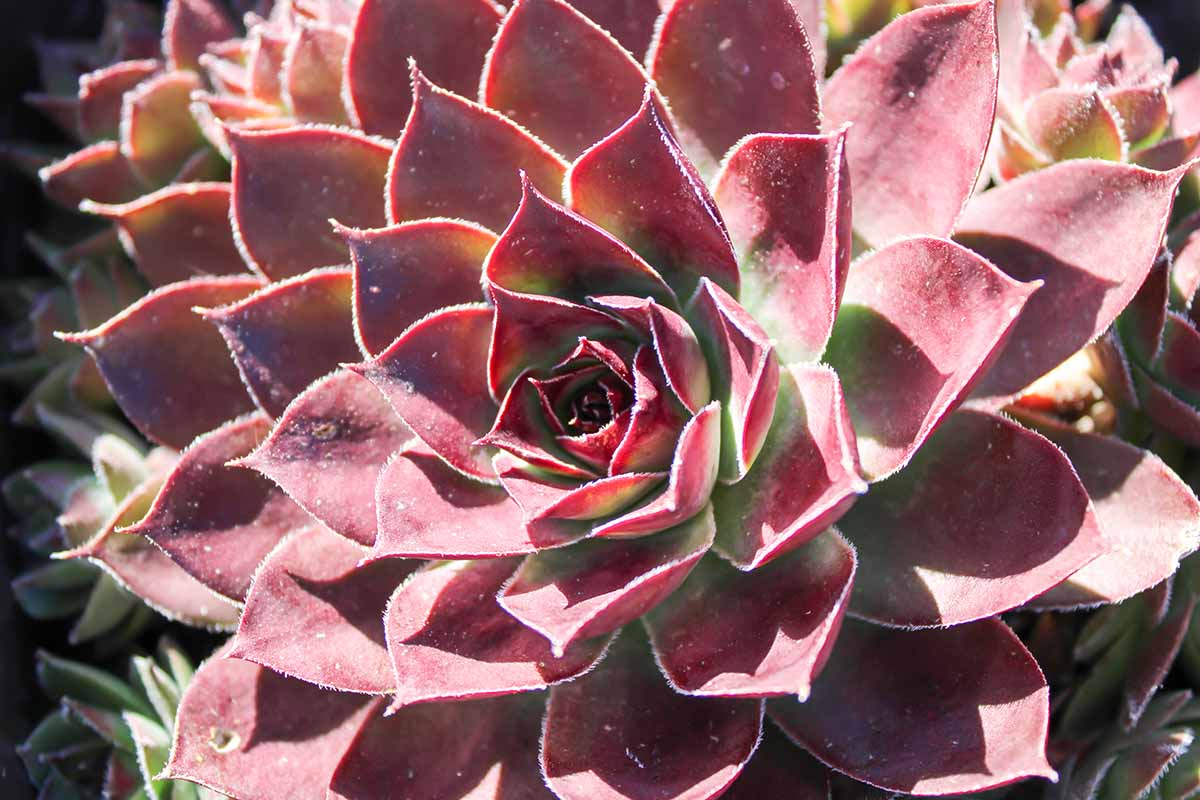
But the color gives this variety its roar. The foliage is bright red and has fine silver hairs lining the edges.
The plants are hardy in Zones 5 to 10. They’re at their roaring red best with peak color in late winter and early spring. In other seasons they’re more lime green with delicate red mottling.

‘Red Lion’ is available from Succulents Box via Amazon in two- or four-inch plastic nursery pots or clay pots.
10. Robin
Introduced in the UK in 1976, this striking S. arachnoideum cultivar does seem to go bob, bob, bobbin’ along.
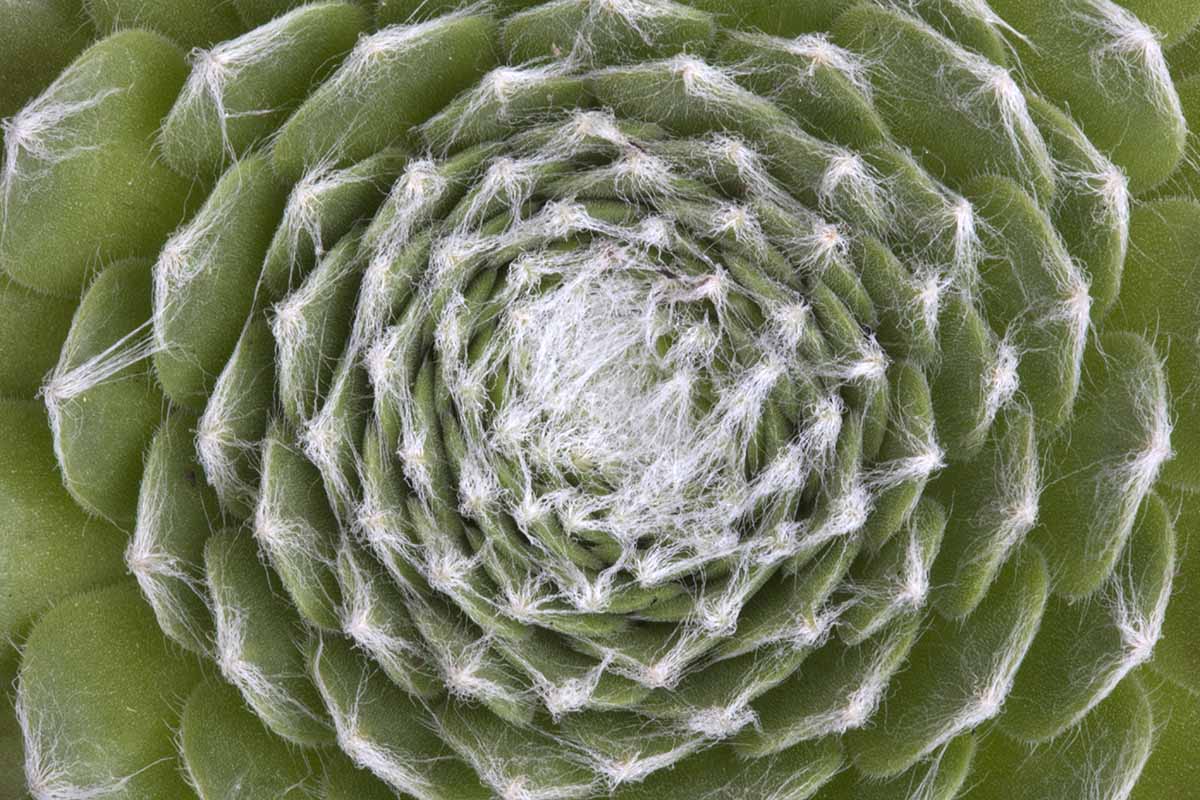
It produces a mound or carpet of medium-size, two-and-a-half- to four-inch rosettes that grow about three inches tall. Plants can spread about 10 inches.
The color is amazing, beginning as a silvery green in spring and then transitioning to a sort of blue-green with crimson tips as the weather warms.
This variety also features this species’ signature webbing, which makes it look shimmery and just a bit like an elegant bird’s nest.
‘Robin’ is hardy in Zones 4 to 10.
11. Sugar Shimmer
Yes, even certain succulents can make me think of Italian wedding cookies…
Another selection from the Chick Charms® series, Sugar Shimmer™ makes a sweet, silvery addition to a rock garden or container.
The leaves look like they’ve been dusted with silver-tone powdered sugar, but the effect actually comes from little hairs on the foliage.
When summer temps heat up, the silvery rosettes have more of a blue-green undertone, and the leaves have purple edges. And you’ll love the adorably fuzzy neon-chick-yellow offsets.
Hardy in Zones 4 to 9, this confection of a succulent forms rosettes that are three to six inches tall and plants spread four to eight inches.
Sugar Shimmer™ is available in two- or four-inch pots from Walmart.
Long Live Sempervivum!
In my early 20s, I was enchanted to learn about the tradition of brother-in-law Rob Stanford’s family.
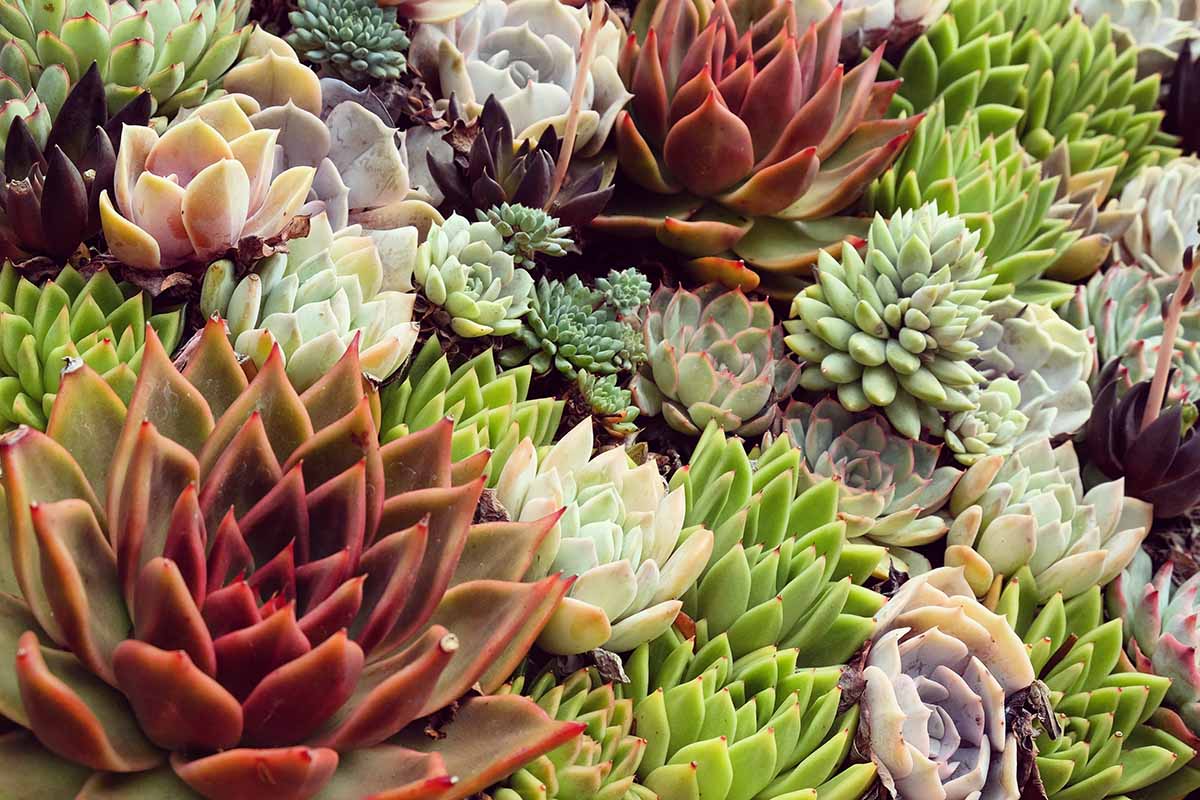
This brilliant, quiet, science-oriented bunch would remove a “chick” from a mama “hen” and plant it to honor the arrival of a new baby in the family.
As the children got older, they could stop by their grandparents’ house to see their personal Sempervivum growing and spreading.
They planted fairly typical green hens and chicks, but nowadays, I’m charmed by other types of this hardy succulent.
The colors alone are mesmerizing, some of the patterns are curved and intricate, and they have these wonderful cultivar names, like the aptly described swirling ‘Hurricane,’ or the mysterious ‘Cornelia.’
Do you have a favorite type you’d like to tell us about that we didn’t include here? The comments section below is the perfect place to share stories and photos.
Ready for more info on growing succulents? Check out these guides next:
